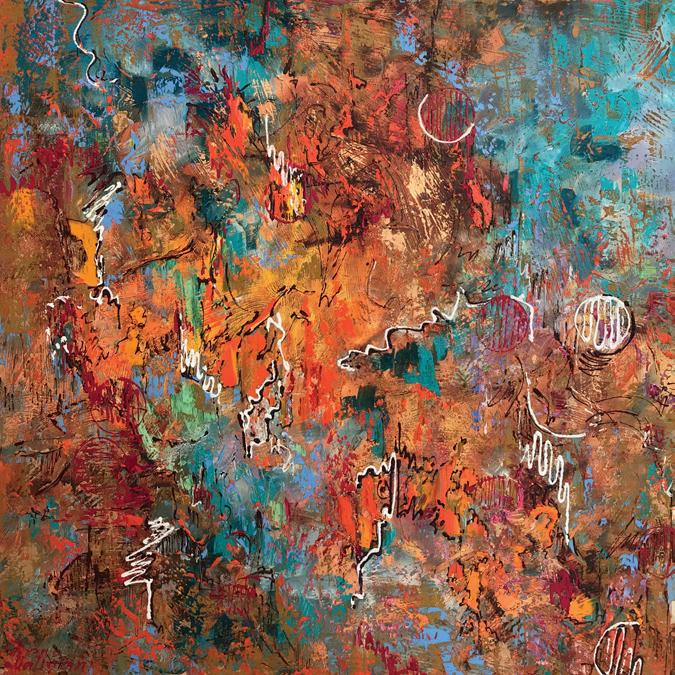The Importance of Sound: A Critical Analysis Cascading with poetry and emotion, Diana Malivani brings joy and music through a diverse and stimulating range of profound elements. There is a fervent academic depth to her works of art that eloquently reference the creative disciplines that are represented by the boundless facets of her artistic endeavour. It is overwhelmingly apparent when considering Malivani’s collection that she is fundamentally moved by music; her series of work entitled ‘Seeing Music’ radiates with the vitality of life and vibrates with an intense sense of movement that has the rare ability to encompass the magical aura of complete concertos and symphonies. Indeed, the individual brushstrokes passionately expressed in Summer Silence seem to embody the distinct musical notes dancing across the canvas that seamlessly bridge the chasm between the aural and visual arts with majestic albeit fluid harmony. The explosive tones and gestures within In A Summer Garden create a subtle but powerful connection with Amadeus Mozart, who is famously said to have seen sounds through hues. Whilst the abundance of colour allows the spectator to observe a manifestation of synesthesia, the correlations run far deeper; Mozart’s predilection for composing uplifting divertimenti for dances is vivaciously rendered through the prodigious sense of joy that exudes from Malivani’s work. Mozart’s study of irregular phrase lengths reflects his rejection of Baroque styles of music, which is mirrored in Malivani’s avant garde approach that shares the philosophical exploration of unprecedented creative methods with the Futurist artistic movement, particularly when considering the visual creations of such artists as Giacomo Balla and Umberto Boccioni as well as the musical scores of Filippo Marinetti. Malivani’s deep, analytical and conceptual approach is further exemplified in her work The Overture, a composition that propels visual parallels with the graphic musical scores of John Cage and of the subsequent Fluxus movement. The motifs depicted across Malivani’s canvas are reminiscent of the experimental symbols indicating sound, and at once the spectator can tangibly experience the invigorating crashing of cymbals through the artist’s expressive iteration of movement and audio. The sensorial ties between divergent elements cast cognitive comparisons with Gerard van Honthorst’s striking scenes that harbour the raucous atmosphere of music and dancing.
63






